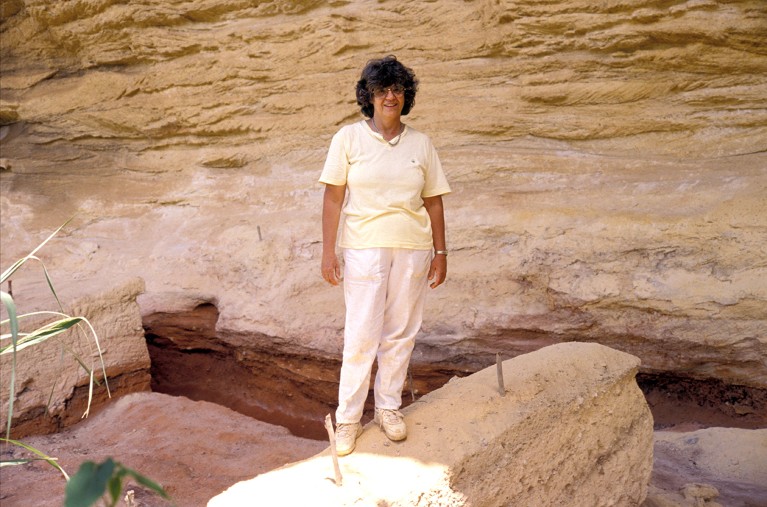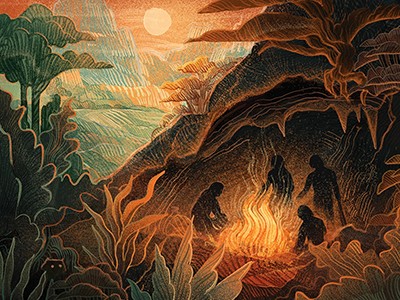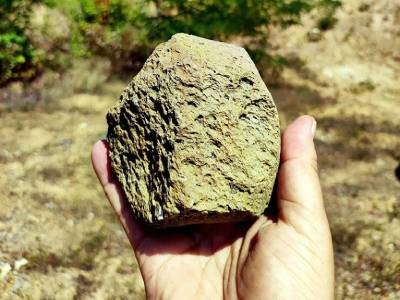
Credit score: Lena Trindade/BrazilPhotos/Alamy
Niède Guidon, a Brazilian archaeologist, was one of many first researchers to problem a long-standing consensus on when and the way early people arrived within the Americas. The Clovis-first principle — popularized by US archaeologists within the mid-twentieth century — posited that individuals first migrated from Asia to the Americas throughout the Bering Strait about 11,500 years in the past. They then moved southwards, colonizing first North America after which South America. However Guidon, who studied cave work, hearths and labored stones within the state of Piauí in northeastern Brazil, discovered proof that the area may need been occupied greater than 30,000 years in the past. Her conclusions precipitated uproar within the scientific group. Guidon has died aged 92.
Born within the metropolis of Jaú in São Paulo state, Guidon had a French grandfather who taught her his language when she was a baby. In 1961, after receiving her diploma in pure historical past on the College of São Paulo, she went to the Paris Panthéon-Sorbonne College to check prehistoric archaeology. Returning to Brazil, she labored on the Paulista Museum in São Paulo, the place she first learnt concerning the historical rock work in Piauí.
Who have been the traditional Denisovans? Fossils reveal secrets and techniques concerning the mysterious people
Regardless of having no political affiliations, Guidon was anonymously denounced as a communist underneath the Brazilian navy dictatorship that started in 1964. She went again to Paris and lived there till 1986. There, she grew to become a researcher on the French Nationwide Centre for Scientific Analysis (CNRS) and obtained her PhD on the Sorbonne in 1975. In 1970, she made her first journey to Piauí. She was so impressed with the traditional artwork that, in 1973, she organized a Franco-Brazilian expedition to the area. The staff discovered 55 archaeological websites, together with some scattered with flaked and polished pebbles that she attributed to human motion.
“We thought, then, that these websites have been current,” she wrote in a 2003 account for ComCiência journal, “as a result of, like all American archaeologists, we believed that the Americas had been populated late.” However what Guidon and her staff present in a set of rock shelters known as the Toca do Boqueirão da Pedra Furada prompt in any other case. Over many years, the researchers carbon-dated hearths at a number of stratigraphic ranges, discovering that some have been greater than 50,000 years previous. Her 1986 Nature paper, written with Georgette Délibrias, one in all France’s main radiocarbon researchers on the time, offered charcoal dated to 32,000 years earlier than the current — greater than twice the age of every other identified human settlement within the Americas (N. Guidon and G. Delibrias Nature 321, 769–771; 1986).
Guidon’s work was met with scepticism in the US, and heated debates ran for many years. Her critics argued that the dated fireside stays resulted from pure fires and that the flaked pebbles had been shaped naturally in rockfalls. Nonetheless, Guidon’s relentlessness ultimately satisfied even a few of her detractors to take her proof critically. In 2013, Walter Neves, a bioanthropologist on the College of São Paulo, instructed Pesquisa Fapesp journal that he had analysed the Pedra Furada pebbles at Guidon’s invitation. He was “99% satisfied that the artefacts have been actually produced by males”.
Oldest stone instruments in Europe trace at historical people’ route there
Progressively, a physique of analysis corroborating Guidon’s principle started to take form — together with pre-Clovis findings elsewhere within the Americas and doubts that the route throughout the Bering Strait was ice-free throughout the timeframe required within the Clovis-first speculation. Acceptance of the Clovis-first mannequin has continued to say no, regardless of occasional findings that appear to help it.



